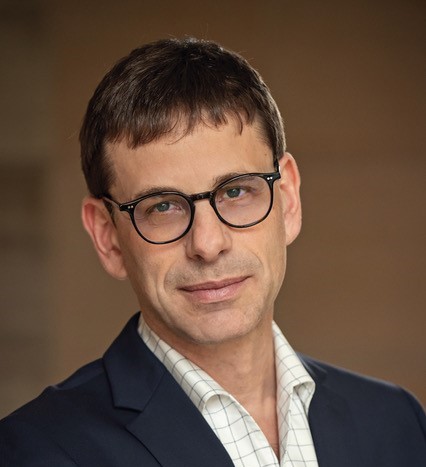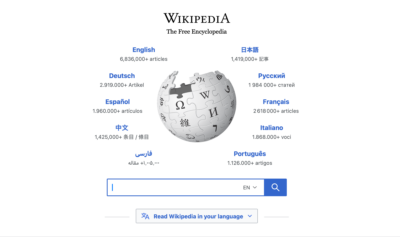
OpEds

Distinguish between antisemitic incidents, and respond accordingly
According to the Anti-Defamation League (ADL), incidents of antisemitism in the United States increased 36% from 2021 to 2022. Over the past year, the highest number of incidents were recorded since the ADL began keeping statistics in 1979. The European Union Agency for Fundamental Rights has observed similar trends across Europe.
The explanations vary: increased political, cultural, and economic polarisation; a rise in hateful rhetoric; developments in Israel/Palestine; or simply greater incentive to report incidents.
But many of these surveys fail to distinguish between types of incidents, or if they do, they bury the distinction in the fine print. All incidents aren’t the same, and shouldn’t be treated equally. As a scholar of Jewish history and the Holocaust, I teach about antisemitism. As the director of two Jewish Studies programmes in American universities; the chair of a community response group on antisemitism; and a leader of several Jewish organisations, I have witnessed and experienced many incidents myself, and have been responsible for responding to some. What I have learned is that different incidents require different types of response. The first step is to determine whether the incident is an ignorant offense, a provocation, or a threat.
In February 2023, a man posted on Twitter that he was going to “carry out the punishment of death to anyone that is Jewish in the Michigan government”. Police determined that the man had three 9mm semi-automatic pistols registered to him, and was under investigation by Michigan State Police for stealing a fourth. He was also believed to own a shotgun and two hunting rifles. Federal agents arrested the man, and charged him. This incident was a clear and direct threat, and the best approach was for law enforcement to take the man into custody and neutralise him.
Not all incidents can be handled by law enforcement, though. Every Saturday for about 20 years, a small group of dedicated antisemites have protested outside the synagogue I attend. For many years, they held up signs protesting against Israel and American congressional support for the Jewish state, but have recently expanded into Holocaust denial and conspiratorial allegations of Jewish power. They propagate hatred with harmful words, but the physical danger is more remote. It’s highly unlikely that the same individuals who have limited their demonstrations to hateful rhetoric for 20 years are suddenly going to erupt in violence. They are a provocation more than a threat. The danger is that they will catalyse others to act in harmful ways. They are trying to induce a reaction, and they thrive on publicity. Since their actions are protected by the law and condemnations from municipal officials have failed to move them, the community has determined that the best approach is to ignore them rather than risk amplifying their message.
Most of the incidents I have dealt with fall under the category of ignorant offense. When I was the director of the Jewish Studies programme at Indiana University, I arrived at my office one morning to find that swastikas had been drawn with markers all over the posterboards on our walls. Security cameras had recorded the culprits, and with the help of some local high school principals, the police were able to identify them as two high school students. We were assured by law enforcement that there was no lingering threat. A few days later, a young woman of high school age showed up at my office in tears. She confessed to having drawn the swastikas together with a friend. When she was caught, she said, her grandfather sat her down and told her how when he was her age, he was fighting Nazis in the US army. He showed her photos of the concentration camps, and told her what the swastika represented. She had no idea. She explained to me that she and a friend were wandering through campus late at night with markers, looking for mischief, and stumbled across the Jewish Studies programme. The first thing that came to mind when they saw “Jewish” were swastikas, so they set to work. If they had found themselves in mathematics, they probably would have drawn numbers. It was terrifying for my staff and me to enter our offices that morning and find the swastikas, and there is something seriously wrong with the way we educate children in that the first thing they thought of at seeing the word “Jewish” was a swastika. This incident, though, falls into the category of an ignorant offense. The best response was the education her grandfather provided.
Education also mitigates many of the blunders my students naively make in class discussions on sensitive topics. They innocently bring into discussion myths and memes that they have picked up in the media, from friends, or on campus, giving me the opportunity to correct them with facts and context. When a student equates Israel to apartheid South Africa, for instance, I’m given the opportunity to dive deeper and educate them on the different historical contexts, the conceptual differences and similarities, and the resonances of the analogy among different audiences. There may be students in the class who take offense, but that’s the cost of education.
Each of these incidents, which took place in communities I was a part of, show the interrelatedness of different manifestations of antisemitism – conspiratorial allegations of Jewish power; holding all Jews responsible for the purported misdeeds of the Israeli state; Holocaust denial; and the spread of Nazi symbols. Yet each also signals a different level of material harm: an ignorant offense; a provocation; and a threat. In this age of rising reported incidents of antisemitism, it’s important for communities to develop measures that distinguish how to respond based on the severity of the incident.
- Jeffrey Veidlinger is the Joseph Brodsky Collegiate Professor of History and Judaic Studies at the University of Michigan. He’s the author of four award-winning books on the history of Jewish life in Russia and Ukraine, including, most recently, “In the Midst of Civilized Europe: The Ukrainian Pogroms of 1918-1921 and the Onset of the Holocaust”.
- He will be hosted at Limmud Cape Town (Sunday 20 August); Durban (Monday 21 August); and in Johannesburg (Friday 25-27 August). His sessions will include “The Holocaust in Ukraine”, and “Marc Chagall and the Soviet Yiddish Theatre”. For information or to register, visit limmud.org.za.










